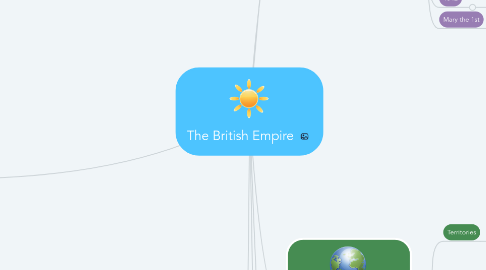
1. Late British Empire
1.1. Britain could no longer afford an empire.
1.2. Britain had no right to rule people who did not want to be ruled by Britain.
1.3. Britain realised that the Royal Navy was not strong enough to protect all the Empire anywhere in the world.
1.4. In 1919, the British government massacred a peaceful gathering at Amritsar.
1.5. Mohandas Gandhi led a powerful non-violent movement that refused to obey British laws. For example the Salt March, 1930.
1.6. In 1935, the Government of India Act gave Indians control of everything except foreign policy.
1.7. In 1926, the British government agreed the Balfour Declaration – that Canada, Australia, New Zealand and South Africa were completely independent countries, "freely associated as members of the British Commonwealth of Nations".
1.8. In 1947, India and Pakistan were given independence.
1.9. In 1960, British Prime Minister, Harold Macmillan admitted there was a "wind of change" in Africa. Most of Britain's African and Caribbean colonies achieved independence in the 1960s.
1.10. In 1973, Britain joined the European Economic Community and became part of a trading community based on free trade between the countries of Europe.
1.11. In 1997, Britain formally handed Hong Kong back to China.
2. Remnants
2.1. The British Antarctic Territory (BAT)
2.2. The English language
2.3. Territories
2.3.1. Anguilla
2.3.2. Bermuda
2.3.3. British Antarctic Territory
2.3.4. British Indian Ocean Territory
2.3.5. British Virgin Islands
2.3.6. Cayman Islands
2.3.7. Falkland Islands
2.3.8. Gibraltar
2.3.9. Montserrat
2.3.10. Pitcairn, Henderson, Ducie and Oeno Islands
2.3.11. Saint Helena
2.3.12. Ascension Island
2.3.13. Tristan da Cunha
2.3.14. South Georgia and the South Sandwich Islands
2.3.15. Sovereign Base Areas of Akrotiri and Dhekelia
2.3.16. Turks and Caicos Islands
2.3.17. Saint Helena, Ascension and Tristan da Cunha
3. Definition of Empire
3.1. An empire is a group of countries ruled over by a single monarch or ruling power.
4. Middel ages of the british empire
4.1. In 1066, William of Normandy conquered England. Other lands conquered by the Normans included parts of the south of Italy and North Africa.
4.2. During the reign of Henry II, England was part of the Angevin Empire, which included Ireland and most of western France.
4.3. To increase their wealth and power, medieval kings tried to take over ever-wider lands. Sometimes this could be achieved through marriage; however, sometimes Kings would have to go to war.
4.4. In 1169, the Normans invaded Ireland. In 1171, Henry II went to Ireland to make sure that their conquests were made part of his Angevin Empire. In the years that followed, about half of the island was overrun by Normans, English and Welsh.
4.5. In 1277, Edward I invaded and conquered North Wales.
4.6. During the Hundred Years' War (1337‒1453), Edward III and Henry V captured large areas of France, but by 1453 the only land still in English hands was Calais (now in France), which was later lost in 1558.
4.7. In 1169, the Normans invaded Ireland. In 1171, Henry II went to Ireland to make sure that their conquests were made part of his Angevin Empire. In the years that followed, about half of the island was overrun by Normans, English and Welsh.
4.8. During the Hundred Years' War (1337‒1453), Edward III and Henry V captured large areas of France, but by 1453 the only land still in English hands was Calais (now in France), which was later lost in 1558.
4.9. By 1500 the kings of England had lost control of all of Ireland except for coastal towns and an area around Dublin known as the 'Pale'.
4.10. By 1500 the kings of England had lost control of all of Ireland except for coastal towns and an area around Dublin known as the 'Pale'.
4.11. In 1277, Edward I invaded and conquered North Wales.
5. Early British Empire
5.1. The british empire made its first efforts to establish overseas establishments in the 16th century; they were doing this with commercial intentions. In the following century they established their first overseas establishment in North America and the West Indies.
5.2. In 1655 settlements in the Bermuda's, Honduras, Antigua, Barbados, and Nova Scotia Jamaica were obtained by conquest. After that in 1670 the british empire had established the following establishments in The American colonies New England, Virginia, and Maryland
5.3. In the 17th century the british empire began to trade slaves for sugar, tobacco, rum and other items that were considered a luxury by the british. It is estimated that over 480000 people were enslaved in the british colonies.
5.4. 1497
5.4.1. King Henry the 7th
5.4.2. Giovanni Caboto
5.4.2.1. First European to set foot in North America
5.5. 1534
5.5.1. King Henry the 8th
5.5.1.1. Split with rome creating the church of England
5.6. 1542
5.6.1. King Henry the 8th named King of Ireland
5.7. Mary the 1st
5.7.1. Married King Philip the 2nd
5.7.1.1. 1558 Mary died
6. Overseas possesions
6.1. Territories
6.1.1. Anguilla
6.1.2. Bermuda
6.1.3. British Antarctic Territory (BAT) - ASSI has no direct responsibility in relation to BAT as the Antarctic Treaty takes precedence.
6.1.4. British Indian Ocean Territory
6.1.5. British Virgin Islands
6.1.6. Cayman Islands
6.1.7. Falkland Islands
6.1.8. Gibraltar - outside ASSI's remit due to its position within the European Union.
6.1.9. Montserrat
6.1.10. Pitcairn Island, Henderson, Ducie and Oeno Islands
6.1.11. St Helena, Ascension and Tristan da Cunha
6.1.12. Sovereign Base Areas (SBA) - ASSI's responsibility in relation to the SBA is limited to the provision of advice to the Administrator.
6.1.13. South Georgia and South Sandwich Islands
6.1.14. Turks and Caicos Islands
6.2. East India Company
6.2.1. It was a British company that was formed to pursue trade with the East Indies
6.2.2. Indian private army
6.2.2.1. £229.9 million Revenue
6.2.2.2. £239.3 million worth of exspenses
6.2.2.3. 260000 members
